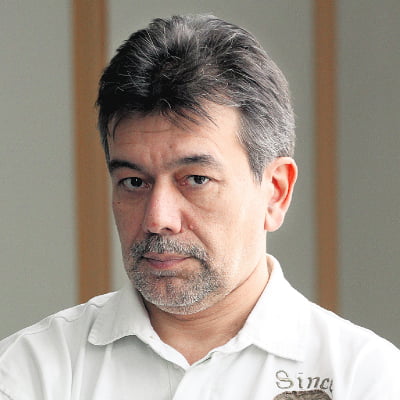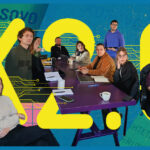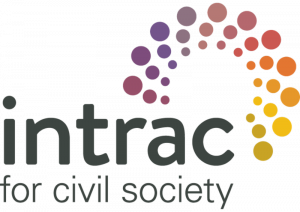“Hyperlocal” has been a buzzword in the media for quite a while now. As the concentration of ownership of traditional media and the penetration of social media networks has severely undermined local media across the globe, the fewer and fewer surviving local media organizations have been struggling to find viable business models to sustain local content production.
This process had left audiences outside the big metropolitan areas largely unserved. National and regional media organisations initially looked at hyperlocal content as an opportunity to fill that niche, but in many countries newly appearing online media have been more successful in developing better content strategies and more efficient business models than the legacy media organizations.
Giants such as the New York Times, The Washington Post and MSNBC have launched their own hyperlocal platforms in the early 2000’s, only to pull the plug on them a few years later. At the same time, semi-professional, often volunteer driven and non-commercial digital-only outlets have strived and are successfully integrated in local communities, providing them with the coverage of news and relevant topics they need.
But what does “hyperlocal” actually mean
and why some attempts are more successful than others; and most importantly, is there an emerging hyperlocal model that can be of use to media organisations globally?
“Hyperlocal” in journalism traditionally is described as content covering events and topics occurring in and relevant for only a small, local community, which may vary from a village to a small town to a specific neighbourhood in a bigger city. “Hyperlocal” can go even deeper: it may serve the need only of a part of the geographically defined area, e.g., ethnic or religious groups, nature or art lovers living in a particular area etc.
In terms of content, there is an obvious demand for this kind of coverage – national and regional media do not cover news that they do not consider relevant for the wider audience.
As a result, people might be well aware what’s going on in the nation’s capital or even overseas, but have a hard time learning about news that is important for their daily lives in the communities they live in.
“Hyperlocal” as a business model usually refers to generating all revenue entirely from the micro audience the outlet serves: either directly, in the form of donations or subscriptions from the members of the community, via advertising and sponsorship from small businesses serving the same population, or from local authorities and institutions.
However; it must be noted that quite a few of the hyperlocal media outlets don’t have and don’t need a business model. The people working for them, rarely professional journalists, are volunteers - unpaid enthusiasts who create content in their free time, as a service to their community. For the purpose of this article, let’s look at them only from a content and production perspective, and try finding out why they are often more successful than some professional outfits.
Hyperlocal news sites are a lot about reader input and community interaction. While all media in the digital age have some level of user generated content and community engagement, hyperlocal is mostly, if note entirely, about that. Their editors act as both content creators and as curators and moderatos of content created by the audience they serve.
Success far from guaranteed
In the early 2000’s, when the term “hyperlocal” started gaining popularity, it was seen as an innovative way of compensating the loss of traditional local media and taking advantage of the “democratization” of media that came with digital publishing. Some of the biggest publications in the US grabbed the opportunity and started their own hyperlocal outlets with the hope of reaching new audiences. In 2009 the New York Times started The Local, an online outlet focused on New York’s East Village.
In The Local experienced NYT editors guided the work of students from the NYU Journalism Institute to cover local issues and give voice to the local people. It closed in 2013, giving way to Bedford + Bowery, this time in cooperation with the New York Magazine, and covering a wider NY area. Its last publication was in May 2021.
Washington Post’s experiment with the hyperlocal Loudoun Extra, covering the neighbourhoods around Washington D.C. started in 2007 and was closed only two years later, quoting “unsustainability of the model”.
Also in 2009, MSNBC.com acquired the hyperlocal start-up EveryBlock, which lasted longer, but finally closed as a standalone edition in 2018.
Globalised Hyperlocal: an oxymoron or a successful business model?
EveryBlock now redirects to Nextdoor, a social media app specialized in hyperlocal user generated content connecting neighbours with each other, and with businesses and local institutions. When logging in, users are asked to enter their location, which directs them straight to the focused localized content created for their locality. In reality, Nextdoor is a vast web of independent micro networks covering hundreds of separate locations, each of which carries only content relevant to that particular place. i.e. it is in fact a network of hyperlocal social media. Nextdoor is available in the United States where the company claims it reaches 30% of the households, and in Canada, the UK, Germany, France, the Netherlands, Italy, Spain, Sweden, Denmark and Australia; and intends to expand further afield.
Merging hyperlocal content with the accessibility of a social network, and outsourcing all content creation to the users, a model similar to every other social media, has proven to be a sound business solution: Nextdoor is a publicly-traded company listed on the New York Stock Exchange and has an estimated worth of 4,3 billion USD. The app is free for users, and makes its money from local businesses and brands.
To small businesses it offers direct connection to the immediate neighbourhood they serve. The advantages for local businesses are clear: the vast majority of local residents do their shopping locally; and many are deliberately willing to spend more if they shop locally. The app offers to businesses several options varying from a simple post to comprehensive paid advertising options.

Nextdoor also provides national advertisers and brands with tailored, localized advertising that makes their offer closer to the local residents.
To make the content offer stronger, Nextdoor provides options for public agencies – local authorities, health institutions and public transport. In a nutshell, Nextdoor users get all the information about events, news, shops and services they may need; and the businesses get access to the particular clients they serve in the relevant neighbourhood.
While this is an example of hyperlocal gone commercial on an industrial scale, other examples of successful hyperlocal content exits as well, following very different content and revenue paths.
The Small Town with the Big Sound
Bromyard FM, despite its name, is actually an online-only Radio, which started during the lockdown in March 2020 in Herefordshire, England. It was set up by a local rock musician and DJ and his band of enthusiasts who thought their community needed local information and a sense of belonging to fight the loneliness at a time when leaving home was impossible. It quickly turned into a vital local community platform that now has 5700 members (in a town of 4500 residents) in its Bromyard FM Chat Facebook Group alone.
Its recipe for success: great music tailored to the demographics, local news and topics of interest, and seamless integration into the local community, business and public institutions.
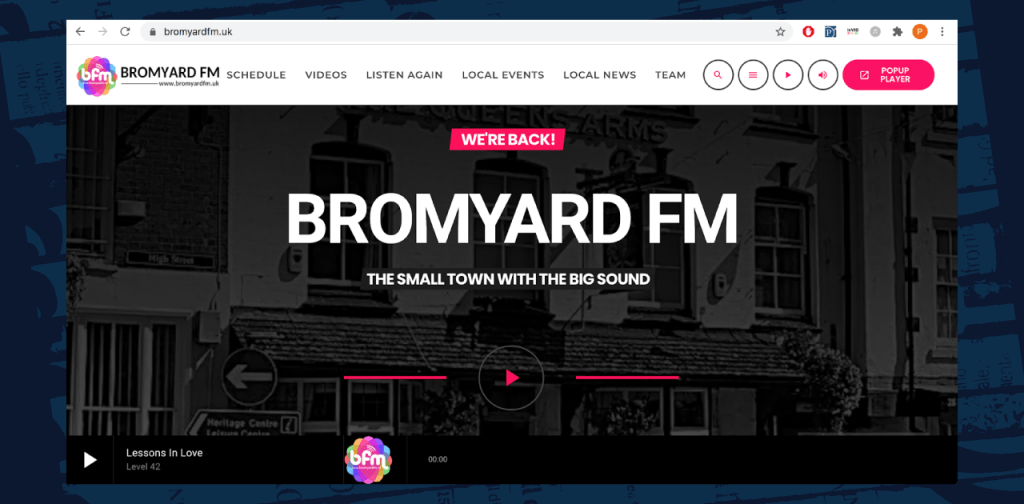
Here are some examples of the content it offers:
New Café to open
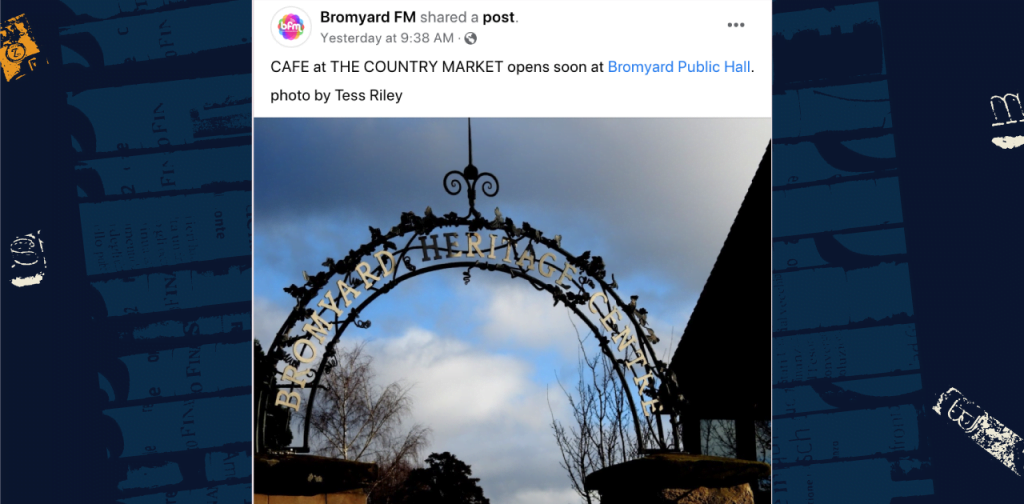
Town Council plans up for debate:
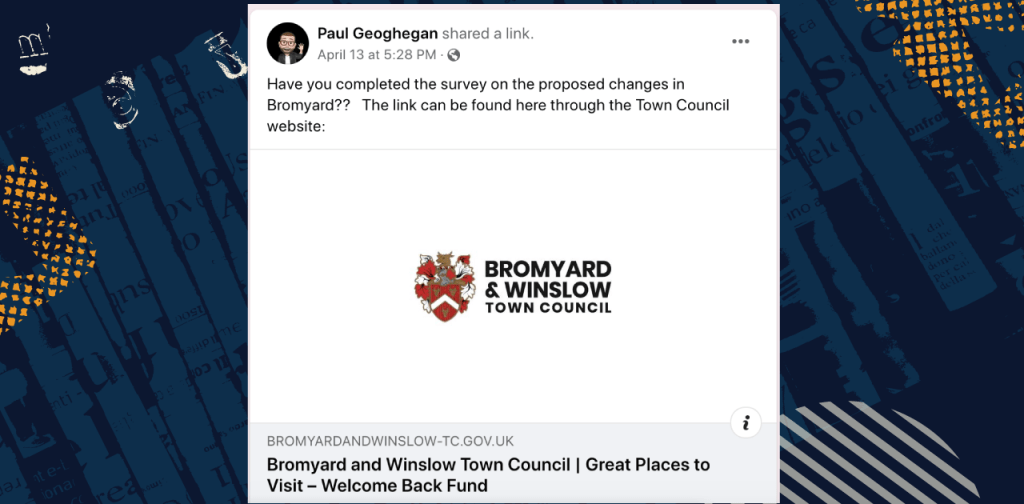
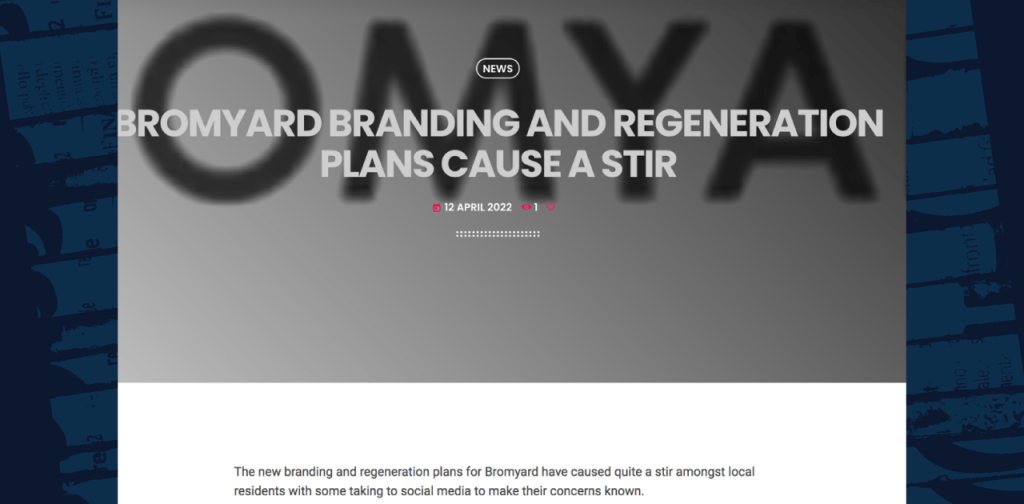
Fundraiser for a local man who needs an operation
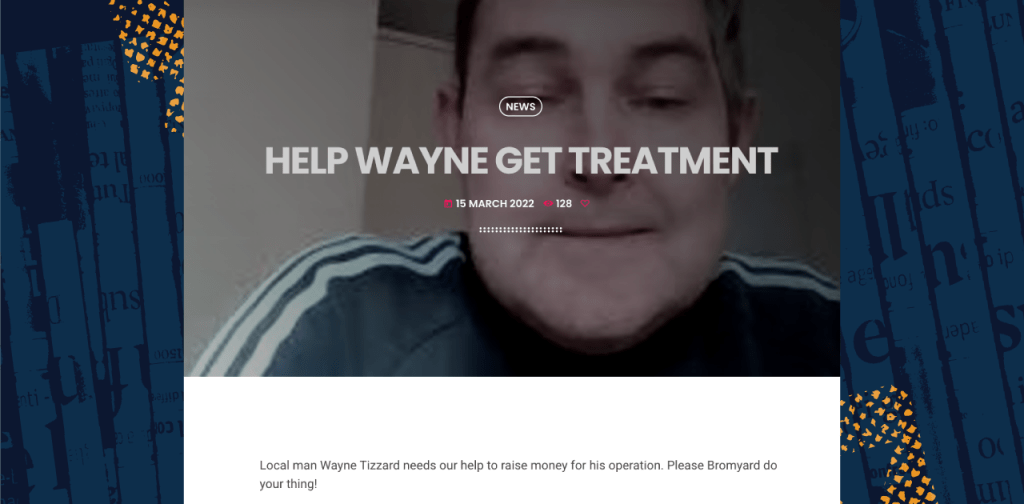
The Bromyard FM business model is based on donations, subscription and advertising; however, commitment, volunteerism and a sense of community belonging remain key for success. The community got behind the station right from the beginning, setting up a GoFundMe fundraising page (initially without the founder’s knowledge) to help support the station.
The offer to supporters and advertisers is divided in three categories; but the differences between them are not too big and all are accessible to anyone interested in supporting the Radio and getting access to the local audience.
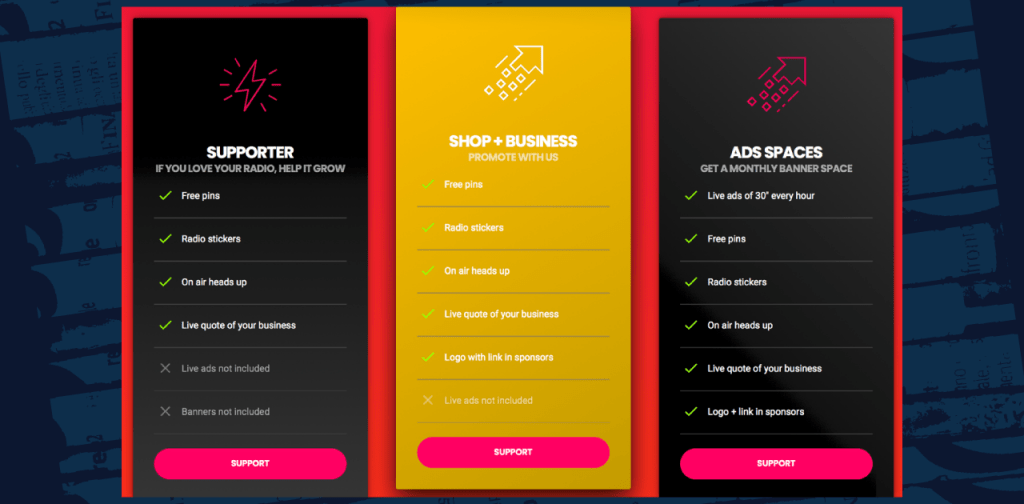
Humans of New York: From a photoblog to a global cultural phenomenon (and a multi-million dollar charity)
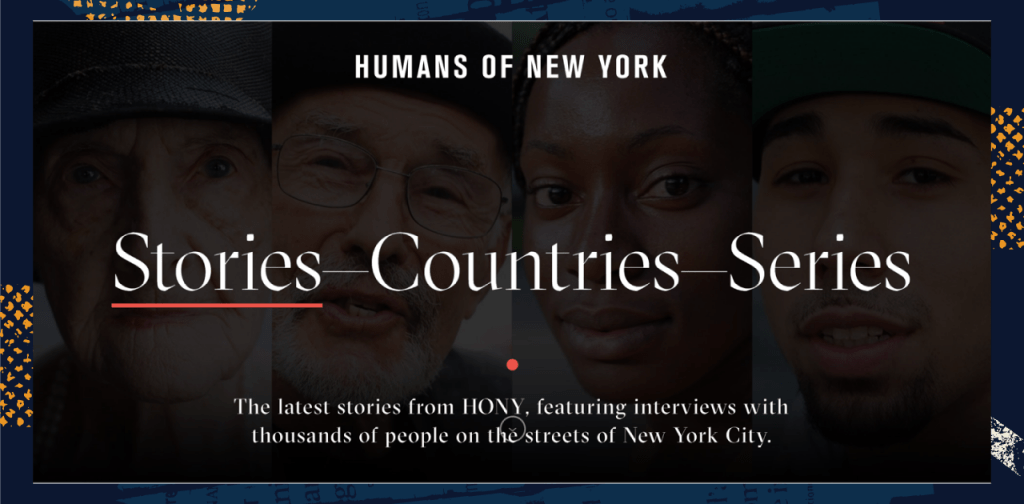
The world famous Humans of New York (HONY) project was launched in November 2010 as the personal photoblog of US photographer Brandon Stanton, who initially wanted to take pictures of 10 000 citizens of New York and put them on a map of the city. He soon started adding conversations and stories to the pictures though, and turned a photo blog into to a media of its own type, starting hyperlocal and going global. HONY’s Facebook page is soon to get to 18 million followers globally. HONY has been issued as series of books and has inspired numerous “Humans of…” projects around the world. Photographer Brandon Stanton was 26 when he started Humans of New York.
HONY is not a commercial operation, but raises funds to support the production; and to help its subjects in need. In a Facebook post from 2021 Brandon Stanton says “…along the way we’ve fundraised over $20 million to help alleviate burdens. All of this has been done without a single sponsored post or advertisement, and the primary reason for this is the support of Patreon subscribers.”
Patreon is a popular American subscription (crowdfunding) platform which allows fans fund their favourite artists. In exchange for a monthly donation supporters get access to exclusive content, community, and insights into the creative process.

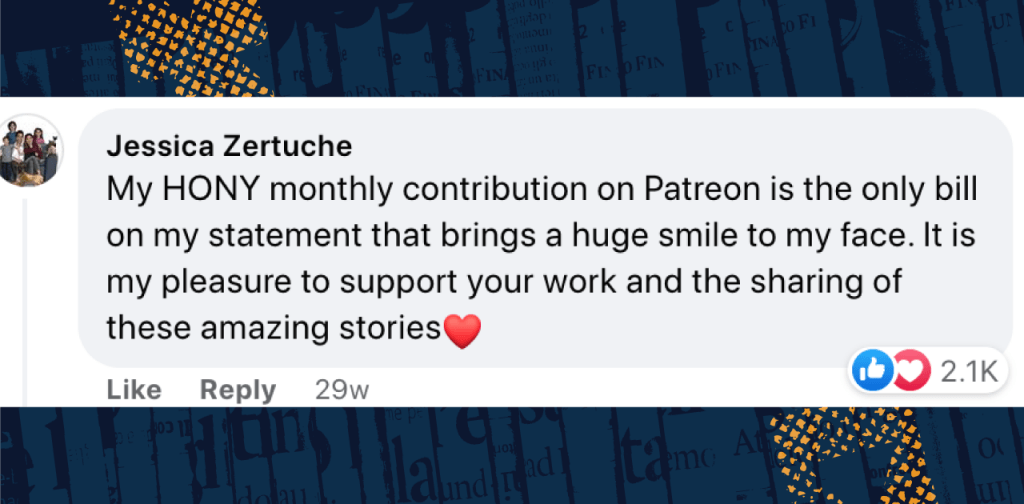
As The Standard Times are fading; a new Light rises
New Bedford, Massachusetts is a city of 100 000, known mainly as big commercial fishing centre, formerly the capital of the US whaling industry. Its legacy newspaper, The Standard-Times has changed hands several times and is currently owned by Gannett, the largest US newspaper publisher. As the local market for the printed press keeps shrinking and online revenues do not provide sufficient replacement to sustain robust content production, The Standard-Times has radically reduced its staff and is struggling to provide comprehensive coverage of news and issues of interest to the local public.
So far, this story is no exception - it’s estimated that in the last 15 years about 2200 local newspapers have closed in the US alone; and the number of journalists has halved.
What makes New Bedford different is The Light, a non-profit local outlet set up by former journalists of The Standard-Times and the Boston Globe, a relatively rare example of a successful local alternative created by professional, legacy-media journalists, able to provide independent, in-depth coverage of important local topics. The Light’s founding publisher is the former Boston Globe executive who set up the Globe’s online platforms in the 90’s. The media depends entirely on sponsors and donations:
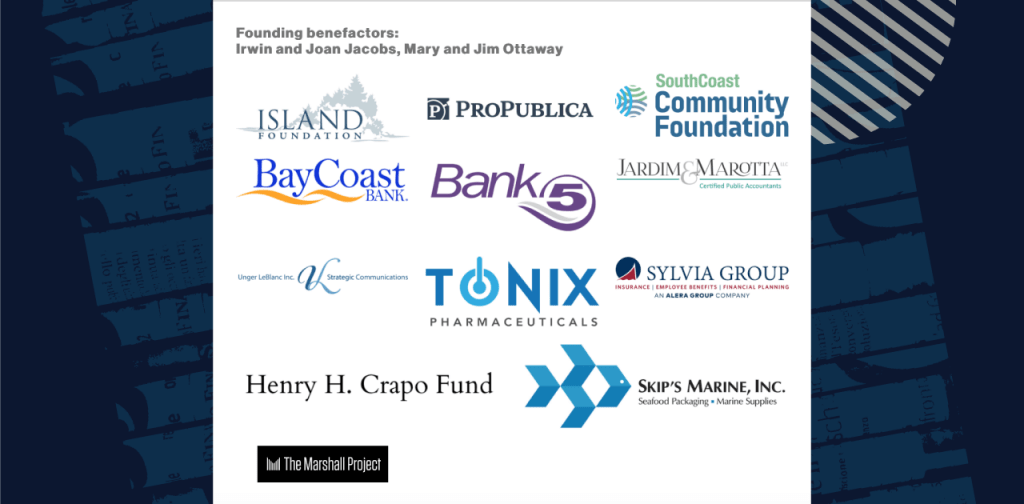
It is currently raising funds from the pubic to match a 100 000 USD donation “from a unanimous donor”; and is hoping to reach the goal in time for its first birthday this coming June 2022.
A success? Maybe too early to call.
The bottom-line
Starting a hyperlocal media, or launching hyperlocal content, even with the best of intentions and great content ideas, is no guarantee for success. The examples of those who made it are so different from each other that it’s not possible, at least for the time being, to establish a model that would work for all. There are; however, a few features that all successful hyperlocal media share:
| - Good will, readiness to sacrifice (rather than invest) time and money, and a desire to serve the local community are usually the key motivators of the founders; - Success only comes with deep, authentic integration into the local community; - The community does not have to be defined only geographically, shared interests are just as important; - Mainstream legacy media business models don’t apply – few traditional media have been good at hyperlocal; - Everyone in the local community benefits: citizens, local businesses and authorities alike; and everyone is willing to do their part – pay for subscription, support local businesses, pay for quality journalism, get access to the audience. Hyperlocal will not work if there is no feeling of belonging in the community; - Commercial success is usually not on the agenda. Successful hyperlocal media make enough to cover their costs and grow, but the motivation is rarely the money the founders are making. |
In conclusion
In March 2022, after two years of online meetings forced on us by the pandemic, I was finally able to travel to Prizren and meet Mamer Fusha, the founder and owner of a local Radio and Television company. We had been working with him over the past year to set up what is essentially hyperlocal content – city council updates and tailored community talk shows for the Turkish, Bosnian and Roma minorities of this beautiful multi-ethic, multi-religious, multi-cultural city.
The name of Mamer’s company is RTV Besa. My friends at the station searched for a long time for the appropriate translation of “besa” in English. It’s more than a pledge, it’s more than a word of honour. It’s a lifelong, unbreakable commitment to the allegiance you pledge, and to the obligation, solidarity and loyalty you promise to others. Don’t try hyperlocal without besa.

